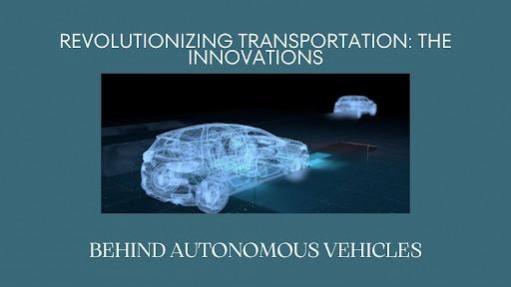
Autonomous Vehicles (AVs) are emerging as a transformative force in global transportation, promising to revolutionize road safety, urban mobility, and logistics. Experts Spandana Sagam and Govardhan Reddy Kothinti highlight how AVs leverage artificial intelligence, machine learning, and advanced sensors to enhance efficiency and safety. However, achieving their potential involves overcoming regulatory, public trust, and ethical challenges. The path forward will require collaboration, innovation, and careful navigation of societal and technological complexities to fully realize AVs' potential.
The Leap Towards Safer Roads
AVs offer a compelling promise to improve road safety. Human error is responsible for about 94% of serious accidents worldwide, underscoring the need for a new approach. Equipped with LIDAR, radar, cameras, and ultrasonic sensors, AVs provide superior environmental awareness and responsiveness compared to human drivers. Their advanced systems enable precise 3D mapping, real-time object recognition, and seamless V2V and V2I communication. These capabilities facilitate rapid decision-making and adherence to safety protocols, potentially reducing traffic fatalities. Despite issues like cybersecurity and all-weather functionality, AVs hold significant promise for enhancing road safety.
Reimagining Urban Mobility
AVs are poised to transform urban mobility by reducing the need for private car ownership. Autonomous ride-sharing services could decrease the number of vehicles on the road, alleviate traffic congestion, and free up urban space currently used for parking. The concept of "Mobility as a Service" (MaaS) is gaining traction, integrating AVs with public transit and micro-mobility solutions into a single platform. This shift could lead to more green spaces, improved air quality, and efficient traffic flow. As private vehicles become less common, cities will benefit from reduced congestion and shorter commutes.
Revolutionizing the Logistics Industry
In the logistics sector, AVs offer substantial advantages. Autonomous trucks can operate continuously, unlike human drivers constrained by regulations limiting driving hours. This capability promises faster deliveries and more efficient supply chain management. Innovations such as platooning and AI-powered route optimization improve fuel efficiency, cut emissions, and enhance reliability, especially in e-commerce. Autonomous drones are also transforming last-mile delivery, reducing delivery times significantly. However, widespread adoption in logistics will require updates to regulations, infrastructure improvements, and enhanced cybersecurity measures.
Challenges on the Horizon
Despite their potential, AVs face several significant challenges. Regulatory frameworks must evolve to address new issues related to liability, safety standards, and data privacy. Economic concerns include the potential displacement of workers in transportation-related industries. Public trust is another major hurdle, with many people hesitant to relinquish control to autonomous systems. Building trust will necessitate extensive pilot programs, clear communication, and proven safety records. Additionally, the ethical dilemmas surrounding AV decision-making in unavoidable accident scenarios must be carefully considered for widespread acceptance.
A Glimpse into the Future
Autonomous Vehicles represent a major leap forward in transportation, with the potential to enhance safety, reduce congestion, and transform logistics. However, realizing this vision requires navigating a complex landscape of regulatory, societal, and ethical issues. As the original contributors Spandana Sagam and Govardhan Reddy Kothinti emphasize, the future of AVs is not just about technological innovation but also about reshaping urban environments and industries. As technology advances and regulatory frameworks adapt, the widespread adoption of AVs could fundamentally alter how we navigate our cities and move goods across the globe. Through continued collaboration and innovation, AVs can deliver a safer, more efficient, and interconnected global transportation system.
















